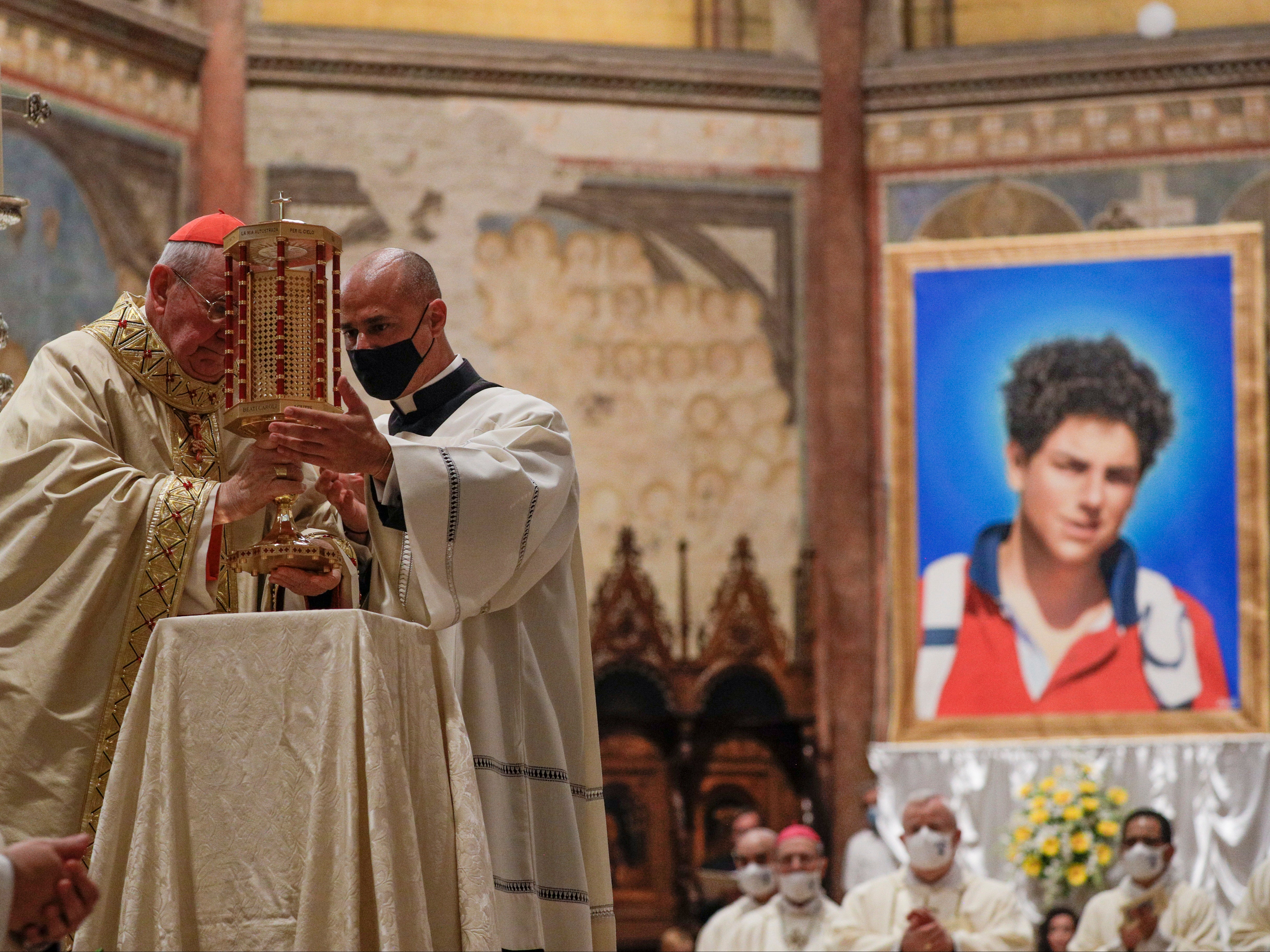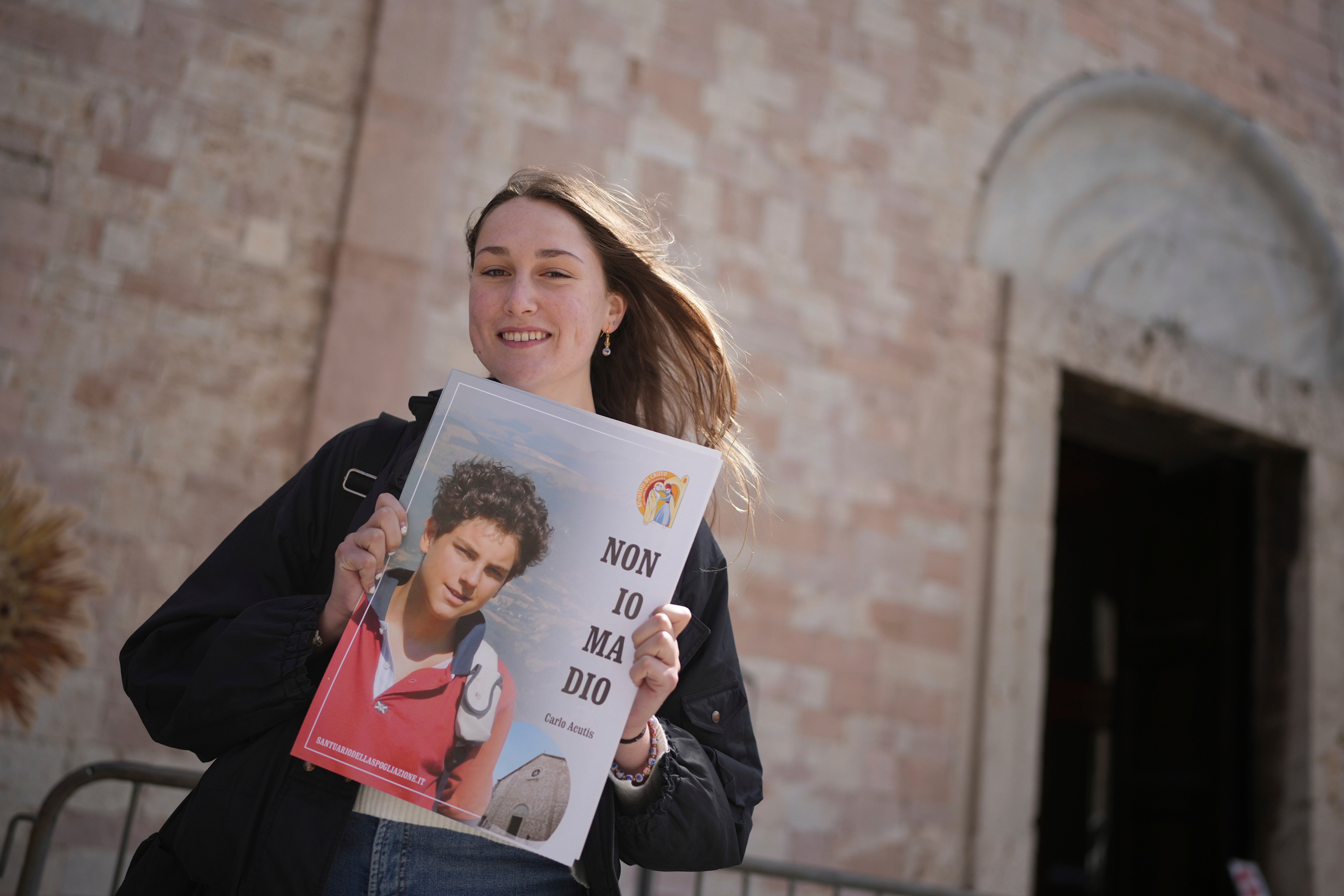Who is Carlo Acutis, the Catholic Church’s new millennial saint?
The late teenager has captured the hearts of thousands

Carlo Acutis, set to become the Catholic Church’s first millennial saint, is already drawing crowds of pilgrims to Assisi, Italy.
His remains, dressed casually in sneakers, jeans, and a sweatshirt, lie in a shrine, a testament to the uncommon devotion he inspires.
A canonisation Mass had previously been scheduled for 27 April in St Peter’s Square to formally recognise his sainthood.
However, following the death of Pope Francis on 21 April, plans to canonise Acutis have been postponed.
The Catholic Church is now preparing for the late pontiff’s funeral on Saturday and subsequent conclave to choose his successor, which is not due to commence until at least 5 May after nine days of mourning.
The Holy See said in a statment: “Following the death of the Supreme Pontiff Francis, it is announced that the Eucharistic Celebration and the Rite of canonisation of Blessed Carlo Acutis, scheduled to take place on 27 April 2025, Second Sunday of Easter or Divine Mercy Sunday, on the occasion of the Jubilee of Teenagers, is suspended.”

But who was this teenager who has captured the hearts of so many?
Born in London on May 3, 1991, to a wealthy Italian family, Carlo spent his formative years in Milan.
His deep connection to his faith began early, after receiving his First Communion at seven years old. From then on, daily Mass, praying the rosary, and eucharistic adoration became integral parts of his life.
While he enjoyed typical teenage pursuits like hiking, video games, and spending time with friends, Carlo also dedicated himself to serving others.

He taught catechism at his local parish and actively worked with the homeless, demonstrating a profound commitment to his faith and community.
He used his computer savvy to create an online exhibit about more than 100 eucharistic miracles recognised by the church over many centuries, focused on the real presence of Christ that Catholics believe is in the consecrated bread and wine.
In October 2006, at age 15, he fell ill. Ten days later, he died of acute leukaemia at a hospital in northern Italy.
His body was later transferred to an Assisi cemetery as Acutis had asked, because of his devotion to the hometown medieval saint, St. Francis.

Why is Carlo Acutis about to become a saint?
His road to sainthood – the canonisation process – started more than 10 years ago at the initiative of a group of priests and friends, and formally took off shortly after Pope Francis began his papacy in 2013.
Carlo was named “venerable” in 2018 after the church recognised his virtuous life, and his body was taken to a shrine in Assisi’s Santuario della Spogliazione, a major site linked to St. Francis' life.
He was then declared “blessed” in 2020 after the Vatican dicastery that studies sainthood processes recognized a miraculous healing through Carlo’s intercession – a child in Brazil who recovered in a “scientifically inexplainable” manner.
In 2024, the church paved his way to sainthood by attributing to him a second miracle: the complete healing of a Costa Rican student in Italy from major head trauma in a bicycle accident after her mother prayed at Carlo’s tomb.

How popular is Carlo, the first millennial saint?
The Rev. Domenico Sorrentino, Assisi's bishop, said that over the last year, a million pilgrims made their way to Carlo’s shrine in this medieval hilltop town in central Italy.
Images of Carlo, usually portraying him with a backpack and smiling broadly, are in shops all over town, from pocket-sized cards to statuettes. A religious souvenir shop near the Vatican recently displayed in its window a near-life-sized statue of the teenager next to one of Mother Teresa of Kolkata.
To many pilgrims, the draw is his relatability as a teen of this time.
“It’s amazing this saint, a young person — we can propose him to our people to imitate because everybody can be a saint,” said Rev. Jacinto Bento, a Portuguese priest who was leading a group of 30 jubilee pilgrims from the Azores islands to Assisi earlier this month.
The same day, Tomaso Barbon of Treviso, in northern Italy, was visiting the shrine with his wife and three children, two of them teens.
“He appears like one of our kids,” Mr Barbon said of Carlo. “A special prayer to him is really welcome.”
Join our commenting forum
Join thought-provoking conversations, follow other Independent readers and see their replies
Comments